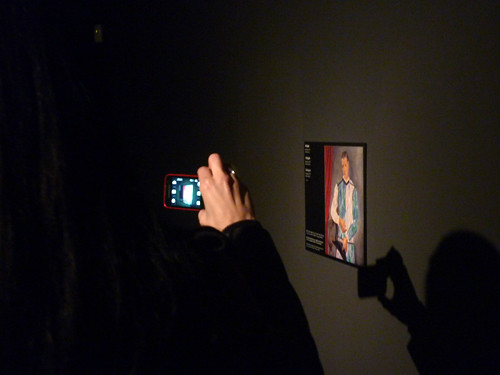Mobile Learning is an
efficient way of introducing educational material to non-traditional
learning environments (e.g. bus stops, lunch breaks and that unbearable speech that drags on for hours). However,
some of the most exciting applications of ML (particularly in the
Arts) are taking place in very traditional environments – museums.
Why?
-Museums are highly
mobile environments.
Unlike classrooms or
conference rooms, most museum displays require people to spend a lot
of time walking around.
-Museums are great
for learning...
They contain a wealth
of artefacts and information that are directly relevant to most
academic disciplines.
-...but learning
doesn’t happen by itself.
Visitors need to be
engaged with these artefacts and information, which is one of the
biggest challenges of museums. ML has the potential to add an
interactive element to the museum visit, attracting people to
displays, presenting information in a new light, providing new tools
for the interpretation of material and contextualising data to
encourage further exploration. This is the principle of engagement
through interaction.
-ML could help solve
an old problem in museums.
Traditional information
panels struggle to please all types of museum visitors (divers,
swimmers and skimmers). ML can provide contextualised and
personalised information – content at the point of interest. In
principle, visitors can consume as little or as much of this content
as they wish. Since the material is accessed through their mobile
device, it does not take up precious space in display cases or the
walls and it is easier and faster for the museum to update or replace
the data.
-Most museums are
keen on new technologies
Curators are generally
interested in attracting lots of visitors and shedding the image of
museums as stuffy, snooty temples of crystallised knowledge. Thanks
to aggressive marketing campaigns, mobile devices are seen as fun and
edgy. They appeal to young people and help stimulate the public’s
imagination.
-ML makes sense
financially
Visitors bring their
own mobile device to the display (which reduces the upfront cost for
the museum). In addition, mobile phone operative systems provide a
ready-to-use infrastructure for the sale of content (e.g. Google
Play, iPhone App Store, etc.).
-ML can be
implemented on various levels
ML solutions can range
from merely printing a few QR
codes (which are free to produce and can be ready to use within
minutes) to more sophisticated solutions (such as augmented reality
apps, involving a team of coders, digital artists and months of
preparation).
 |
| Image: CC by Conxa Roda |

No comments:
Post a Comment